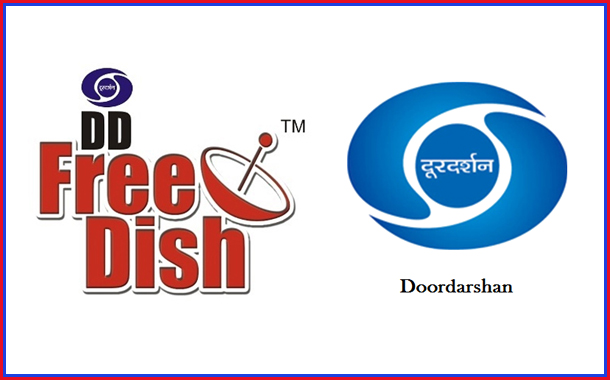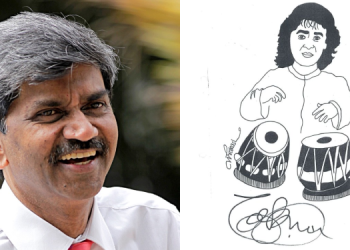Doordarshan channels were launched in India to disseminate news regarding matter of national and international importance as well as cultural programs and entertainment throughout the country. Doordarshan channels are funded tax payers money by way of huge grants/subsidies received Government of India. Government grant to the tune of about Rs 2400 crores were given in FY2014-15. Because of the inherent limitation of the terrestrial mode of transmission along with the cable operators’ reluctance to carry DD channels on their network due to the increasing popularity of private TV channels, the ‘must carry’ regulation was put in place by Government for compulsory carriage of all DD channels by the cable operators.
However, cable operators were still reluctant to carry all channels of DD on their network. As a result DD- Freedish was launched in 2002 to ensure maximum access and reach of all the DD channels across TV households in the country including rural and remote areas. In fact recently launched TV channels (more than two dozen)of Ministry of HRD are not carried by any private distribution platform as same is not been mandated by any regulation. What started as a good initiative was soon lost its sight as DD-Freedish began commercialization of its services by auctioning the slots to private channels thus resulting in private broadcasters capturing majority of the capacity and thereby increasing their reach at a very negligible rate (Distribution Cost in the form of slot rate). As a result relegating the interest of PrasarBharati and Doordarshan to the backburner.
The Platform had started with 4 Transponders, and with the MPEG-2 technology used could only deliver up to 48 Channels at the time of launch. In order to motivate consumers to install dishes and STBs, a few private channels (numbering about 28) were added to the platform covering various genres during 2002 to 2006. With the growth of customers to the DD-Freedish Platform as it was later called, Doordarshan started charging Rs 70 Lakhs per annum private channels to cover the cost. Later 2008 onwards, it started auction of slots.
Commercialization of DD-Freedish Platform
What started as a good initiative was soon lost in sight as DD-Freedishbegan commercialization of its services by auctioning the slots to private channels. The Capacity of the platform was increased to 80 channels by adding more transponders. The commercialization was projected by Doordarshan as a profitable venture, as the auction prices increased to about 4.3 Crores per channel by the beginning of year 2017 and later were fixed at Rs 8 Crores after there was a hue and cry about cartelization.
However an analysis of the facts reveals that in reality Doordarshan had caused itself a great harm by promoting private channels which moved the entire viewership base to these channels, in effect causing loss of hundreds of crores to Doordarshan by virtue of fall in its viewership ratings and consequently advertising revenues. These facts came to light only after the BARC started rural ratings in 2016-17. The private broadcasters, while paying an average of about Rs 6-8 Crores per annum to DD-Freedish are now earning Rs 500-700 Crores per channel in advertising revenues due to the high reach obtained via DD-Direct while relegating DD channels to the category of unwatched channels, DD losing hundreds of crores in its own potential advertising revenues.
The cause of DD is being sold out to private channels for a pitiful revenue of about Rs 98 crores (2014-15), Rs 180 crores (2015-15), Rs 275 crores (2016-17) barely covering the expenses, but on the other hand the loss per channel to DD is unmeasured, but estimated at over Rs 700-Rs 800 crores. Also by paying merely about Rs 150-200 crores as carriage fee the private broadcasters are earning about Rs 150-2000 crores as advertisement revenues collectively their FTA channels.

The remaining popular channels garnered over Rs 1000 Crores in Ad revenues taking the total to Rs 2500 Crores in FY 16-17. In the current Year (FY 17-18) the figure is expected to be Rs 4000 Crores as the new winners in auction are top private broadcasters eliminating smaller but diverse content providers.
DD-Freedish is causing Heavy Losses to Doordarshan
As officially announced by Prasar Bharti, the DD-Direct Revenues Auctions were as follows:
- FY 2015-16 Rs 180 Crores
- FY 2016-17 Rs 264.17 Crores
At the same time the Advertising revenues of Doordarshan declined heavily. As per audited data it is revealed that the Advt revenues were as follows:
- Fy 2014-15………. 1301 Crores
- FY 15-16……………992 Crores (Loss of 309 Crores FY 14-15)
- FY 16-17…………..475.7 Crores (Loss of 516.3 Crores FY 15-16)
Of the figure of 475.7 Crores of Advt revues in FY 16-17, Rs 318.06 crore came government advertisements and only Rs 157.59 crore corporate ads during the year. In effect, within 2 years, the advertising revenues of Doordarshan have fallen 1301 crores to 475 Crores of which bulk is Government advertising.This is a loss in advertising revenues of Rs 826 Crores. In 2015-16, PrasarBharati received grants worth Rs.2,734 crore the information and broadcasting (I&B) ministry. For 2016-17, the government has raised the grants-in-aid to Rs.3,108 crore, according to the annual report of I&B ministry.
The loss in advertising revenues for Doordarshan is owing to the viewership shifting to private channels on its platform. BARC data reveals that the top rated 15 channels on DD-Freedish platform had GRPs of 50 to 80 while DD Channels had GRPs 0 to 3.
The losses would have been higher if Govt Advt revenues are not counted as Corporate Ad revenues are just 157.8 Crores for the entire DD Network. Any single private channel of a top broadcaster has higher ad revenues than the entire network of Doordarshan (including DD-Freedish and over 6000 transmitters and 40,000 engineering, marketing and managerial staff). This carnage has been caused by the DD-Freedish Platform as there are no viewers for DD Channels.
Losses to Exchequer due to License fees and taxes
While the losses loss of advertising revenues as per audited figures are clearly evident, equally quantifiable are losses which have arisen due to License fees for DTH and Taxes. Making free channels available on DD-Freedish platform has led to migration of customers Licensed DTH platforms to DD-Direct. As per data available and also quantified by TRAI, a total minimum of 30 Million customers had become inactive on Pay DTH platforms as on Dec 2016 and moved to free DTH. Cumulatively over 70 million STBs in private DTH networks are lying inactivated. The Pay DTH Platforms are subject to License fees at 10% and, GST. The losses to the exchequer due to license fees and Taxes are estimated by industry as follows taking a very conservative estimate of customers who have shifted to DD-Freedish:
If the losses which directly occurred to DD-Direct and to the Central exchequers are added as above, these losses amount to
- Rs 1941.5 Crores in 2015-16 and
- Rs 2844.1 Crores in 2016-17.
DD-Freedish has promoted Private TV channels while neglecting HD channels of Doordarshan
Doordarshan had launched HD versions of its National Channel (DD-National) over 5 years back. However the same could not be propagated as it was never prioritized in placing on the DD-Freedish Platform. The same is the case for DD-Lok Sabha and Rajya Sabha and regional channels which should be in HD format.
Instead of putting HD channels on its own platform DD-Freedish, it gave away precious capacity for a small yearly revenue of Rs 6-8 crores per slot at the same time denying the opportunity to its own channels. Today there are over 60 channels each in the HD category of major DTH platforms. However in attempting to empower private channels to earn hundreds of crores in advertising revue, it neglected providing capacity to its own HD channels.
DD-Freedish DTH Operations are not in conformity with the Regulatory Environment
All DTH Platforms in India operate under a DTH License as per the DTH Licensing Policy which was enacted in 2001 after the prohibition on the reception and distribution of television signal in Ku Band was withdrawn by the Government vide notification No. GSR 18 (E) dated 9th January, 2001 of the Department of Telecommunications. Being a Government owned platform, the DD-Freedish operates without any License, which was appropriate so far as it was carrying Doordarshan Channels, being a public service platform.
However after full commercialization of DD-Freedish, where it is no longer a public service provider (only 24 channels of Doordarshan are carried against over 56 for private broadcasters), there is no justification for the platform to earn more and more revenue in the form of higher advertisement revenue by merely paying a small carriage fee to the tune of Rs 6 to 8 crores. This has resulted in huge advertisement revenue loss to all DD channels.
DTH Operators are Subject to TRAI Tariff and Interconnect Orders
All DTH and Cable operators are subject to TRAI Tariff Order and TRAI Interconnect TELECOMMUNICATION (BROADCASTING AND CABLE) SERVICES INTERCONNECTION (ADDRESSABLE SYSTEMS) REGULATIONS, 2017. As per the tariff order, each operator can charge a network capacity fees ( NCF) which can be uptoRs. 130 per month (plus taxes) for first 100 channels; thereafter Rs. 20 for each additional 25 channels. As these Tariff regulations are very stringent (tariff is on the lower side), all operators are likely to charge a minimum of Rs 120-Rs 130 for first 100 channels. As DD-Freedish provides a similar number of channels, it is appropriate that it should also be mandated to charge a Network capacity Fees of Rs 130 plus taxes for first 100 channels in order to provide a fair playing ground for all DTH operators.
DD-Freedish Operations will cause failure of Cable Digitalization Program of Govt of India (DAS-IV)
The Cable digitalization program is now in the final phase called DAS-IV where all cities and towns in India will get covered. As per the Tariff order of the TRAI, customers need to pay uptoRs 130 for first 100 channels, and then can also select channels a-la-carte. Hence many subscribers would opt for just 4-5 additional pay channels beyond the first 100 at Rs 130. But if DD-Freedish continues to provide 100 channels free, it will cause a complete failure of the Digitalization program, which in turn will lead to losses in License fees and taxes of unspecified amounts as the Cable homes number over 180 million ( 18 crore homes).
All commercial platforms whether owned by the Govt of India or by any PSU charge all fees and taxes as per extant laws and guidelines and follow the sector regulator’s directives in regard to tariff and operating guidelines. There are no exceptions to this rule whether in Telecom, Aviation or Hospitality sectors. The DD-Freedish, is a fully working as a commercial platform and needs to be compliance with the sector Licensing rules and tariff as well as interconnect guidelines. DD-Freedish is responsible for an escapingof license fees and taxes to the tune of Rs 1000-1500 Crores per annum as License fees and GST which would have been collectible if the same channels would have been offered on pay DTH or commercial platforms rather than on DD-Freedish, funded public exchequer.
DTH License does not permit FTA Channels
As per the License Agreement for DTHclause 7.5 all channels on the Platform must be encrypted:
“All content provided by the DTH platform to the subscribers, irrespective of its source, shall pass through the encryption and conditional access system, located within the Earth Station, situated on Indian soil”
As DD-Freedish DTH platform has now become a commercial platform, there is no justification for it to violate the law of land by providing private channels in FTA mode.
Encryption of DD-Freedish
There is an urgent need to set the anomalies right by converting DD-Freedish to an encrypted platform. All the FTA channels (available on DD-Freedish) can be authorized to any/ all the viewers, while the platform can be mandated to charge Rs 100-130 per subscriber per month for delivering 80-100 channels as is the case for private DTH operators. This will further help PrasarBharati to become self-dependent on its finance /budgeting aspect with minimum dependency on Government grant.
There is a misplaced notion that DD-Freedish is garnering huge revenues auctions of slots to private TV channels and thus leading DD to profits, but the facts are to the contrary. Against meagre revenues auction of Rs 250 Crores it is enabling private channels to garner Ad revenues which is about Rs 2500 Crores in 2016-17. At the same time, the availability of free private channels on its platform has led to a huge downfall in ratings of Doordarshan channels as shown below in the Table and consequent fall in Advt revenues of all DD channels. The reduction in Advt revenues in 2015-16 as compared to 2014-15 has been Rs 308 Crores and in 2016-17 reduction in advertisement revenue has been Rs 824 Crores. In addition, by migration of customers paid and licensed DTH platforms the to the free DD-Freedish platform and as a result the anticipated losses in the license fees and taxes have been to the tune of Rs 1634 Crores and Rs 2020 Crores respectively in FY 15-16 and 16-17.

DD-Freedish is now fully commercial DTH platform with over 56 private channels and needs to follow the laws / regulation/guidelines as prescribed for commercial DTH platforms. The DD-Freedish platform is also stifling the orderly growth of Pay DTH and Licensed services in India by offering free channels funded by exchequer, helping a group of private broadcasters avoid GST, (which would be applicable if they were to be on any other platform), causing serious threat to India’s cable digitization program and also not following the tariff orders of the Sector regulator. There is an immediate need to convert the platform into a pay DTH platform requiring encryption, customer service.

















